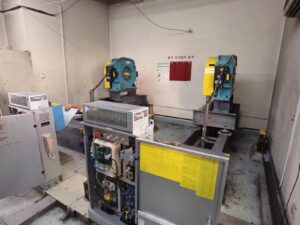Table of Contents
ToggleHow to Troubleshoot Elevator Electrical Systems
Elevators are the unsung heroes of modern urban life, ensuring smooth upward and downward movements within tall structures. Behind their seemingly effortless operation lies the intricate maze of an elevator electrical system. We will delve into the details of troubleshooting these systems, shedding light on their advantages and varied applications.
Advantages and Applications
The keyword phrase “elevator electrical system” encompasses a wide array of components and sub-systems, each with its own set of advantages and unique applications. The seamless interplay between these electrical systems ensures safe and efficient transportation, vital in an increasingly vertical world.
One pertinent example is the variable voltage and frequency drive (VVVF) system used in modern elevators. By controlling the voltage and frequency supplied to the motor, this system offers precise control over the elevator’s velocity, resulting in smoother rides and reduced energy consumption. This advantage makes VVVF systems highly sought-after in high-rise buildings where energy efficiency and passenger comfort are paramount.
Another application worth mentioning is the use of regenerative drives in elevator electric systems. These drives convert the excess energy generated during the descent of an elevator into electricity, which can be fed back into the building’s power grid. This innovative application not only reduces energy consumption but also contributes to the sustainability goals of modern architecture.
Troubleshooting Elevator Electrical Systems: A Step-by-Step Guide
Step 1: Inspection and Identification
The first step in troubleshooting elevator electrical systems is a thorough inspection to identify any visible signs of damage, loose connections, or worn-out components. Visual examination of control panels, circuit breakers, and limit switches can often reveal potential issues.
For instance, suppose an elevator suddenly stops midway during operation. The technician conducting the troubleshooting process must carefully inspect the control panel for any tripped circuit breakers or loose wiring connections that may have caused the interruption. By systematically examining these visible components, technicians can swiftly identify the root cause of the problem.
Step 2: Testing and Measurement
Once potential issues have been identified, the next step is to conduct comprehensive testing and measurements using specialized equipment. For example, electrical meters can be used to determine voltage drops or irregular currents in various parts of the elevator system.
To illustrate, let’s consider a scenario where the elevator fails to respond to calls from different floors. In this case, the technician would employ testing equipment to measure the voltage supplied to the call buttons and the corresponding signals received by the control panel. By comparing the expected values with the measured ones, the technician can pinpoint the faulty component responsible for the malfunction.
Step 3: Component Replacement and Integration
After identifying the faulty components, the technician must proceed to repair or replace them accordingly. This process involves careful disconnection of damaged parts, integration of new components, and meticulous reconnection of wires.
For instance, if a motor within the elevator electrical system malfunctions, the technician would first disconnect it from the power source. Subsequently, the faulty motor would be replaced with a new one, ensuring correct alignment and secure attachment of all the necessary wires. This step ensures the smooth integration of the new component into the existing system.
Exploring the intricacies of elevator electrical systems unravels a world of precision engineering and cutting-edge technology. The advantages and applications of these systems are vast, ranging from energy efficiency to sustainability. By following a systematic troubleshooting approach that involves inspection, testing, and component replacement, technicians can ensure the uninterrupted operation of these vital vertical transportation systems. So, the next time you step into an elevator, take a moment to appreciate the marvels of its electrical system, quietly overseeing your smooth journey. Remember, the unseen electrical systems are the true facilitators of vertical transportation. Elevator electrical systems – the unsung heroes of modern urban life.
We Are Independent Elevator(IDD)
Independent Elevator(IDD) is a company specializing in various brands of elevator transformation and replacement of accessories.
Both the company’s founders has more than 25 years of elevator design and installation of professional engineers, as well as more than 15 years of elevator industry foreign trade experience in charge.
We have sufficient inventory and can quickly respond to orders and deliver goods.


